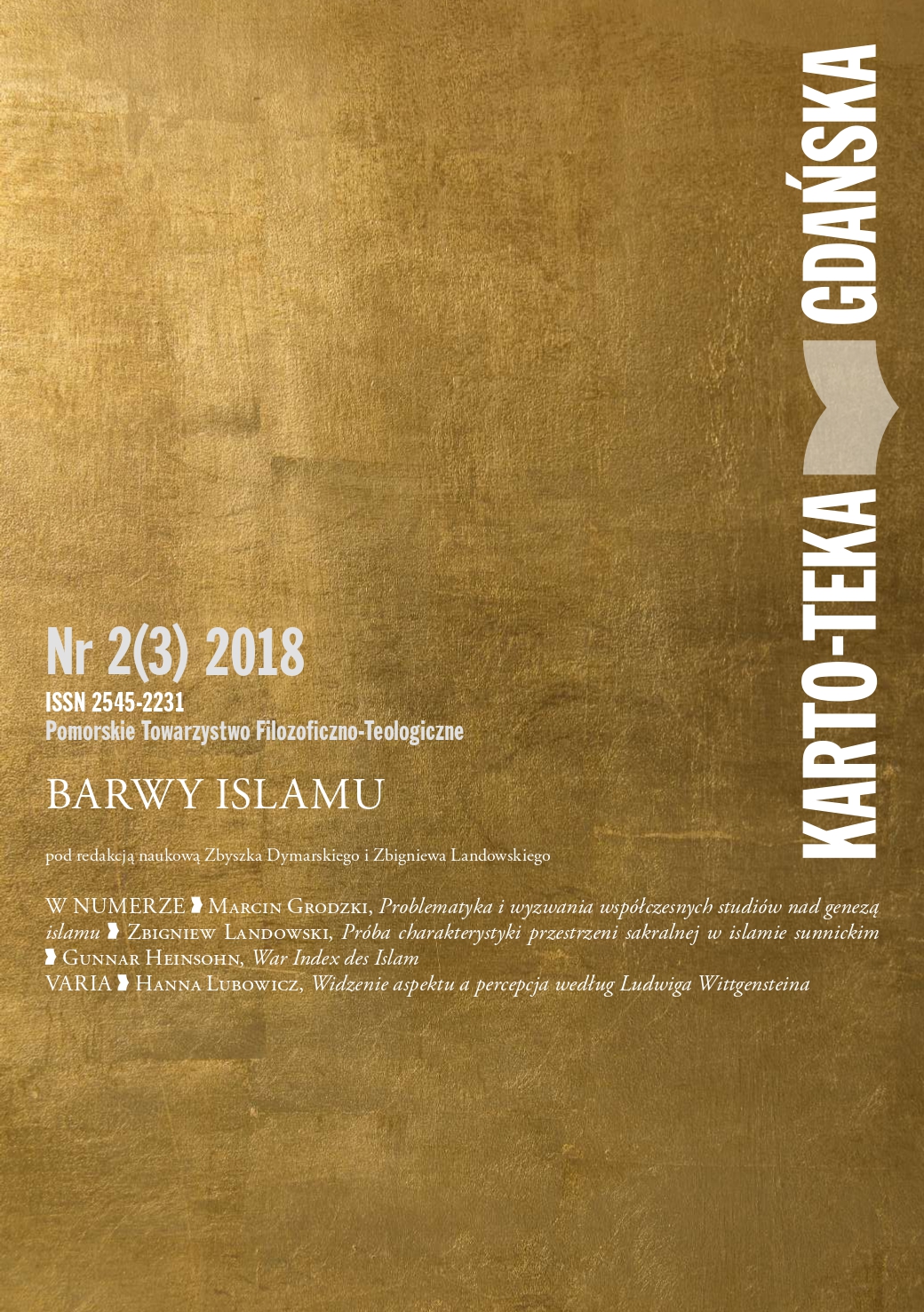An attempt to characterize sacred space in Sunni Islam
Keywords:
sacrum, islam, sunni, Mecca, Medina, JerusalemAbstract
The author reports the results of research and opinions of several scientists regarding the specifics of the sacred space of the three cities of the saints of Islam (Mecca, Medina, Jerusalem) based on the term sacred defined by M. Eliade. They confirm the anthropological and not the dogmatic nature of these sacred ones today, including their contemporary dimension and political implications.
Downloads
References
Dakake, M.M., Human Contention and Divine Argument, Faith and Truth in the Qur’anic Story of Abraham, [w:] Crisis, Call, and Leadership in the Abrahamic Traditions, red. P. Ochs, W.S. Johnson, Palgrave Macmillan, London 2009.
Dakake, M.M., Sacred Land in the Qur’an and Hadith and Its Symbolic and Eschatological Significance, Ed. Society for Scriptural Reasoning, 2011, [online], [dostęp 21 marzec 2015]. Dostępny w internecie: <http://jsr.shanti.virginia.edu/vol-10-no-1-august-2011-people-and-places/sacred-land-in-the-quran-and-hadith-and-its-symbolic-and-eschatological-significance/>.
Eliade, M., Sacrum i profanum, Wydawnictwo Aletheia, Warszawa 1996.
Holland, Cf. T., In the Shadow of the Sword: The Birth of Islam and the Rise of the Global Arab Empire, Brown Book Group, Little 2013.
Jałowiecki, B., Przestrzeń jako pamięć, „Studia Socjologiczne” 1985, No 2.
Koran, Gutenberg Project, [online], [dostęp: 17 maja 2015]. Dostępny w internecie: <http://www.gutenberg.org/ebooks/16955>.
Koran, przeł. J. Bielawski, PIW, Warszawa 1986.
Koran, przeł. J. Murza Tarak Buczacki, nakładem Aleksandra Nowoleckiego, Warszawa1858, [online], [dostęp: 17 maja 2015]. Dostępny w internecie: <http://www.planetaislam.com/koran_buczacki.html>.
Luxenberg, Ch., Die syro-aramäische Lesart des Koran: Ein Beitrag zur Entschlüsselung der Koransprache, Hans Schiler, Berlin 2000.
Rashid, A., Religious Territory & Islamic Holy Land, Demand Media, “OPPOSINGVIEWS”, [online], [dostęp: 18 maja 2015]. Dostępny w internecie: <http://people.opposingviews.com/religious-territory-islamic-holy-land-10000.html>.
Sulima, M. Miejsca swoje i miejsca obce w przestrzeni domowej w wierzeniach religijnych, „Architecturae et artibus” 2009, No 1, s. 67–76.
Sulima, M., Symboliczne przestrzenie domu, „Zeszyty Naukowe Politechniki Białostockiej. Architektura” 2007, No 20.
Szpociński, A., Miejsca pamięci (lieux de mémoire), „Second Texts (Teksty Drugie)” 2008, No 4, [online], [dostęp: 19 maja 2015]. Dostępny w internecie: <http://www.ceeol.com>.
Uniwersytet Al-Azhar, nr 1754, s. 55, [online], [dostęp: 17 maja 2015]. Dostępny w internecie: <http://islamqa.info/en/11669 >.
Zwemer, S.M., Al Haramain. Mecca and Medina, “The Muslim World” 1947, No 37, s. 7–15.

 Academic Scientific Journals
Academic Scientific Journals

